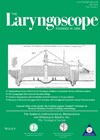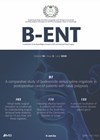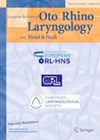
Journal Reviews
How are swallowing and voice affected following anterior cervical discectomy and fusion (ACDF)?
Anterior cervical discectomy and fusion (ACDF) requires an anterior transcervical approach (ACA) to allow decompression of the cervical spine and nerve roots. This approach is also occasionally used for corpectomy and osteophyte removal. Key neurovascular structures related to swallowing and...
How common is oropharyngeal dysphagia amongst the adult population?
It is well known that oropharyngeal dysphagia (OD) is a symptom arising from many different aetiologies or disease conditions and that it is a significant morbidity affecting people’s quality of life. Establishing the prevalence of OD is complicated by the...
What is the relationship between swallowing difficulties and underlying mental health issues?
People living with dysphagia often experience mental health difficulties. This study aimed to identify whether pre-existing anxiety and depression impacted patient scores on a patient-reported swallowing outcome measure, the Eating Assessment Tool (EAT-10) where a score of ≥3 is indicative...
THRIVE: redefining airway management in endoscopic oesophageal surgery
Transnasal humidified rapid insufflation ventilatory exchange (THRIVE) is no longer just a tool to help anaesthetists secure a difficult airway. Thanks to the work of authors like Yang and colleagues, it is being revolutionised to provide apnoeic oxygenation during endoscopic...
COVID-19 and dysphagia in critically ill patients: a reflection of some findings
Dysphagia was a common occurrence in patients admitted to intensive care units (ITU) during the pandemic. This paper explores data from 26 ITUs over 12 months during 2020-2021. Findings from 235 patients admitted with Delta and subsequent Covid variants who...
Diurnal and monthly variations in secondary post-tonsillectomy haemorrhage rates
Several studies have looked into variable haemorrhagic rates with different methods of surgery and clinical backgrounds. Few have looked into non-clinical factors such as environment and diurnal influence on occurrence of post-tonsillectomy bleeding. This extensive study comprises 5357 tonsillectomy patients...
Can prediction models help identify dysphagia in ventilated patients?
Dysphagia commonly affects patients in intensive care units (ICU), particularly those on mechanical ventilation, and is associated with high risk of mortality. This systematic review and meta-analysis aimed to identify predictors for dysphagia in ventilated ICU patients by summarising existing...
Lymph node metastases in papillary thyroid cancer
This retrospective Korean cohort study looked at the risk factors associated with bilateral lateral lymph node metastases in patients with unilateral papillary thyroid cancer. There were 11 patients who met the inclusion criteria across an 11-year period from 2009 to...
Analysing videofluroscopy: does it matter how it’s done?
Videofluoroscopy, as a tool that assesses the process of swallowing, has transformed our understanding of dysphagia. Clinicians can observe the biomechanics of a bolus moving from the oral cavity through the pharynx and oesophagus and into the stomach. Over the...
Factors associated with laryngopharyngeal reflux
This Chinese cross-sectional survey across three hospitals and 320 patients looked at the effect of unhealthy lifestyles and eating habits, as well as psychological difficulties, on the development of laryngopharyngeal reflux (LPR). All the participants underwent gastroscopy, laryngoscopy and various...
How common is self-reported dysphagia in the general population?
Healthcare policymakers and commissioners of services often review incidence and prevalence data when deciding on resource allocation. The authors of this paper have capitalised on a large dataset, the Canadian Longitudinal Study on Aging (CLSA), which collects data on over...
Metrics to evaluate post-ACDF dysphagia
The authors performed a literature review to evaluate the current classification metrics for quantifying dysphagia after anterior spine surgery and, specifically, cervical discectomy and fusion (ACDF). They selected 19 articles after reviewing literature from 2005 to 2021. The result of...














